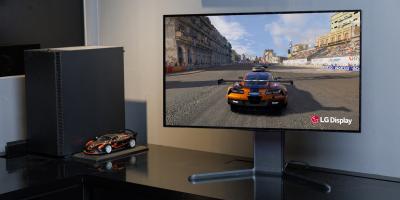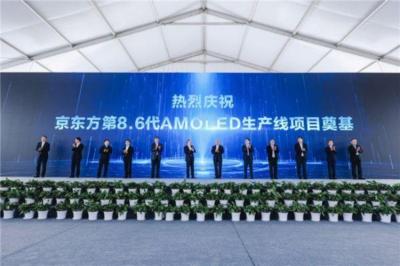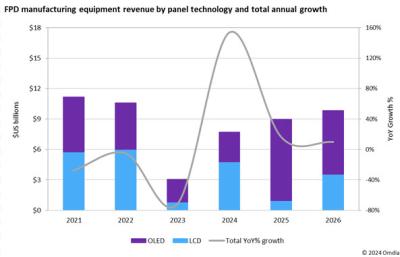TCL CSoT denies reports of a $8.7 billion investment in a new 8-Gen AMOLED fab
As OLED display makers are racing to launch IT AMOLED displays (for laptops, monitors and tablets), there has been recent reports that TCL CSoT has decided to build a 8-Gen AMOLED line, in a 63 billion Yuan (about $8.7 billion USD) investment.
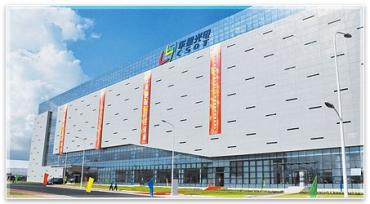
TCL CSoT issued a statement that says that this report is inaccurate, and the company has not made a decision yet and does not have an investment plan.
LG Display developed the world's first OLED gaming monitor panel with a switchable refresh rate and resolution
LG Display announced that it has developed world's first OLED gaming monitor panel with a switchable refresh rate and resolution. The company already mass producing this panel and will now aim to accelerate its market adoption and expects the first product to use this panel to arrive soon from LG Electronics, and other global gaming brands.
The new panel is 31.5" in size, and allows users to choose between two modes - high refresh rate more (480Hz and FHD) and high resolution mode (4K, 240Hz). The high refresh mode is aimed towards games in which speed is particularly important, such as first-person shooter (FPS) or racing games. The higher-resolution mode is more suitable for watching movies or 4K content.
BOE starts constructing its 8.6-Gen IT flexible AMOLED line in Chengdu
Towards the end of 2023, BOE officially announced its plans for a 8.6-Gen flexible LTPO AMOLED line in Chengdu. The agreement with Chengdu's local government was signed in early 2024, and now BOE started to construct its new production line.
The total investment in the fab is expected to reach 63 billion Yuan (over $8.7 billion USD). The fab will have a capacity of 32,000 monthly substrates (2290x2620 mm), and is expected to begin production by Q4 2026 (total construction time will be 34 months, according to the plan).
Icelandair first to install Panasonic's latest 4K OLED Astrova inflight entertainment monitors
Panasonic Avionics announced that it shipped its first batch of the latest Astrova 4K OLED inflight entertainment monitors. These monitors will be installed on Icelandair's forthcoming new fleet of leased Airbus A321neo LR aircraft (due in Q4 2024).
Icelandair will install 16" panels in its business class seats and 13" panels in economy. The new Astrova 4K OLED monitors offer HDR10+, high-fidelity multi-channel audio, USC-C 100W fast charging ports, and an external processing unit that can be placed in the seat box for easier installation.
Rumors suggest TCL CSOT will soon announce its investment in a 8.6-Gen IT AMOLED production line
A report from China suggests that TCL CSOT is looking into building a 8.6-Gen AMOLED production line, targeting IT display production. According to the report, TCL will announce its investment plan later in 2024, if it decides to go ahead with the new fab.

The IT display market (targeting laptops, monitors and tablets) is heating up as Apple will start to adopt AMOLED displays in its tablets this year. Apple's market pull is significant and other vendors will likely increase adoption of IT AMOLEDs.
Samsung Display formally starts building its A6 8.6-Gen IT AMOLED production line
Samsung Display announced that is is starting to build its 8.6-Gen AMOLED production line, that will target IT applications (laptops, tablets and monitors). The new A6 line, will be located at Samsung's old L8 LCD line in Asan, that will be converted to AMOLED production. The company held a ceremony today.
Samsung's plan is to install all the major production equipment by the end of 2024, and begin full-scale production in 2026.
LG Display said to be progressing with its 8.6-Gen IT AMOLED line plans, to announce its plans in H2 2024
According to recent rumors, LG Display has decided to go ahead and build its 8.6-Gen (2250 x 2600 mm) IT AMOLED line, in Paju, Korea (at its P10 hub, which was originally planned for OLED TV production). The company recently started to conduct discussions with equipment makers for supply agreements.
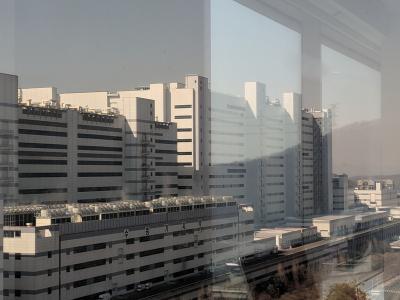
LG Display's plan is to officially announce its 8.6-Gen production line plans in the second half of the year, and start ordering equipment. It is likely that the capacity of the fab will be between 7,500 to 15,000 monthly substrates. LG will be using its P10 building and existing equipment (backplane deposition) to reduce the costs of the 8.6-Gen line. This will mean that there will be delays to LG's WOLED TV panel capacity expansion plans.
Omdia sees a rebound in the display production equipment market
Market research firm Omdia says that display production equipment sales will rebound in 2024 and reach $7.7 billion (154% over 2023), and will grow slowly in the near future, mainly driven by 8.6-Gen OLED production lines (used to make IT displays).
Omdia says that the new 8.6-Gen OLED fab require novel technologies, which results in high equipment costs. In 2024, 32% of all spending ($2.4 billion) will be for Samsung's A6 line, a large investment for a 15,000 monthly subtrates fab. BOE's investment in its upcoming B16 flexible 8.6-Gen line will be even higher - by 18% due to the backplane choice (LTPO over Samsung's oxide-TFT A6).
New OLED TVs, monitors, laptops and prototypes announced at CES 2024
During CES 2024, many device makers announced new laptops, monitors and TVs that use OLED displays. Here's a list of all these new devices:
- MSI Monarch 13 laptop (13.3" 2.8K AMOLED)
- LG OLED B4, C4, G4, M4 (WOLED TVs)
- Samsung Odyssey G9 monitor (49" 5120x1440 240Hz QD-OLED)
- Samsung Odyssey G8 / G6 monitors (27" 1440p 360Hz / 32" 4K 240Hz QD-OLED)
- Razer Blade 16 2024 laptop (16" 2560x1600 240Hz SDC AMOLED)
- Dell 2024 XPS 13 / 14 / 16 laptops (16" 90Hz 4K / 14.5" 120Hz 3200x2000 / 13.4" 2880x1800 60Hz AMOLED)
- Acer Predator X34 X / X39 monitors (4" / 39" 3440x1440 240Hz OLED)
- LG Signature OLED T (77" 4K wireless transparent WOLED TV)
- Samsung S95D, S90D, S85D (QD-OLED and WOLED TVs)
- Gigabyte AORUS 2024 QD-OLED monitors (27", 31.5", 34" QD-OLEDs)
- Acer 2024 Swift 14 X / Swift Go 14 / Swift Go 16 laptops (14" / 16" AMOLEDs)
- Panasonic Z93A, Z95A (WOLED TVs)
- HP Omen Transcend 32 gaming monitor (32" 240Hz 4K QD-OLED)
- Dell Alienware AW2725DF / AW3225QF monitors (27", 32" QD-OLEDs)
- HP 2024 Spectre x360 14 laptop (14" AMOLED)
BOE signs the official contract with Chengdu's local government to build its 8.5-Gen IT AMOLED line
BOE has been planning a 8.5-Gen flexible IT AMOLED Line for a couple of years, and in November 2023, following some delays, the company officially announced its plans for the new fab. Now we hear from China that the Chengdu local government, together with Chengdu's Hi-Tech Industrial Development Zone, have signed the contact with BOE to build the new plant.
The total investment in the fab is expected to reach 63 billion Yuan (over $8.7 billion USD). The fab will have a capacity of 32,000 monthly substrates (2290x2620 mm), and is expected to begin production by Q4 2026 (total construction time will be 34 months, according to the plan).
Pagination
- Previous page
- Page 2
- Next page
